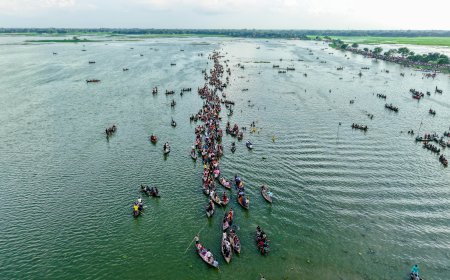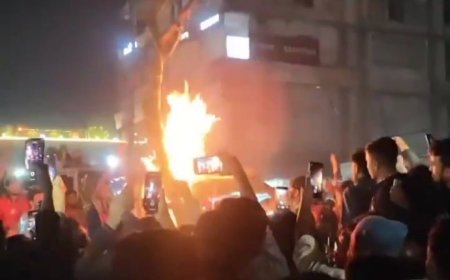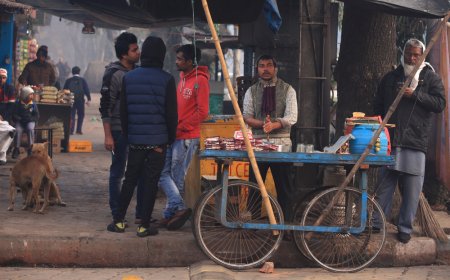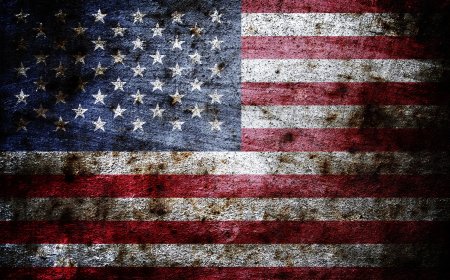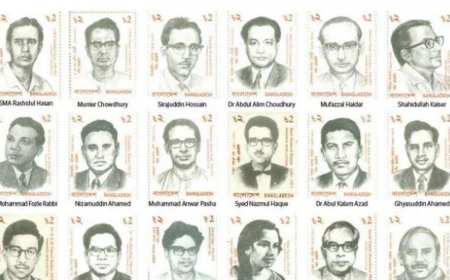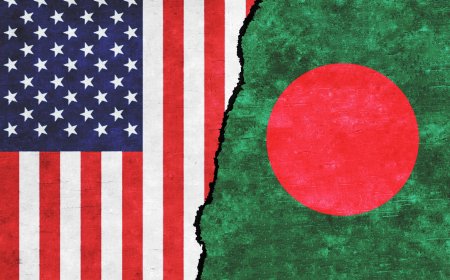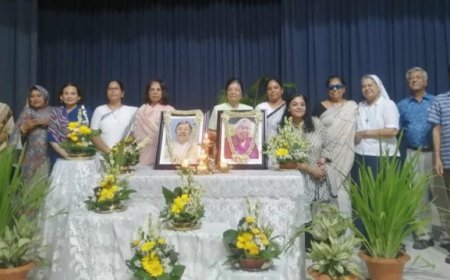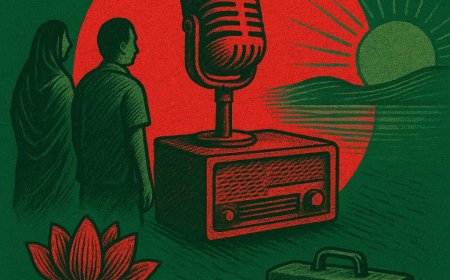When Propaganda Meets Corpses: Counting the Dead of 1971
Why this obsession with minimization? Because to reduce the deaths is to reduce the crime. To reduce the refugees is to erase the moral claim of independence. To dismiss the rapes is to absolve collaborators.
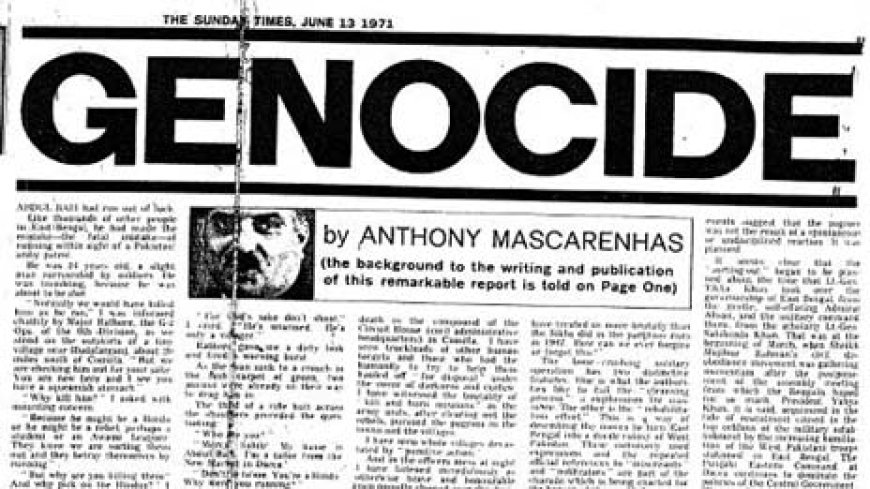
Propaganda has a short memory. Corpses do not.
Fifty-four years on, some voices whisper that 1971 was no genocide at all. That only a few thousand perished. That the refugee columns were fabricated. That the mass rapes were fantasy. They want to sandblast the blood off the marble, to reduce a nation’s birth to a border skirmish.
But the graves refuse to cooperate. The numbers refuse to shrink. And the scars on this land will not fade into a polite footnote.
Chuknagar: A River Port of Corpses
On May 20, 1971, tens of thousands gathered at Chuknagar, a river port in Khulna, hoping to cross into India. Pakistani troops arrived with machine guns and turned a crowd of refugees into a swamp of death. Survivors recall boats sinking under bodies, the river choking on flesh.
The toll? 10,000-12,000 in a single day .
One massacre -- already larger than the entire “few thousand” fantasy. Chuknagar alone buries denialism.
Counting the Dead
The killings stretched from Dhaka University to the countryside: Demra, Santahar, Jessore, countless nameless hamlets. Independent studies offer ranges -- not slogans:
• 125,000-505,000 deaths (British Medical Journal, 1972 ).
• ~300,000 (Richard Sisson & Leo Rose, War and Secession, 1990 ).
• Up to 1.5 million (R. J. Rummel, Statistics of Democide, 1997 ).
Even the lowest figure obliterates minimization. This was no riot. It was industrial-scale killing.
The Killing Machine
Deniers mutter that “there weren’t enough troops” to carry out mass slaughter. The numbers disagree.
• March 1971: ~25,000 Pakistani troops already stationed.
• By July: reinforcements swelled this to 80-90,000 combat soldiers.
• December: 93,000 surrendered -- the largest mass surrender since WWII.
And they were not alone.
• Razakars: 30,000-50,000, armed and deputized.
• Al-Badr: 10,000-12,000 trained killers, later unleashed on intellectuals.
• Al-Shams: several thousand more.
Together: 120,000+ armed personnel turned loose on civilians. That is not a “too small” army. That is a killing apparatus.
Rape as Weapon
The war was waged not just on bodies but through them. Rape became a doctrine.
An estimated 200,000-400,000 women were raped. Some repeatedly, some publicly, some killed after. Dr. Geoffrey Davis, an Australian physician, recalled performing up to 100 abortions a day in Dhaka in 1972. Pakistani officers admitted the strategy: to impregnate women, to use wombs as battlefields.
This was not collateral. It was policy.
The Exodus That Would Not Return
If only “a few thousand” were killed, why did ten million flee?
By June 1971, the British Parliament was already citing 3.3 million refugees in India. By November, US Senate hearings recorded 9.8 million. The UNHCR closed the year at ~10 million -- the largest refugee crisis since the Holocaust.
International Witnesses
It wasn’t just Bangladeshis counting. The world saw, and spoke.
• Anthony Mascarenhas, a Pakistani journalist, defected and wrote the iconic Sunday Times article titled “Genocide” (June 1971) -- blowing open Pakistan’s crimes.
• Archer Blood, US Consul General in Dhaka, sent the “Blood Telegram”to Washington, calling it “a selective genocide.”
• Journalists like Sydney Schanberg (NYT) and aid workers from Oxfam described entire villages annihilated.
This wasn’t an Awami League invention. It was recorded in real time by foreign eyes.
Economic Collapse as Evidence
Even if you quibble over numbers, the economy testifies.
• Rice production collapsed in 1971-72.
• Aid workers described “ghost villages” in Jessore and Noakhali.
• Cholera and malnutrition killed hundreds of thousands more in refugee camps in India.
• UNICEF and WHO launched South Asia’s largest vaccination drive in history to salvage child survival.
The demographic shock waves prove the devastation was not in “thousands.”
December’s Final Solution: The Intellectual Massacres
In December 1971, as defeat loomed, the Al-Badr militia rounded up professors, doctors, journalists, and artists in Dhaka. They were executed in mass graves at Rayerbazar.
These were not “accidental deaths.” They were an attempt to decapitate a nation’s brain. That is intent. And intent makes genocide.
Comparisons That Shame the Deniers
• Rwanda (1994): ~800,000 dead in 100 days.
• Bosnia (1990s): ~100,000 dead.
• Cambodia (1975–79): 1.5–2 million dead.
Bangladesh (1971): 300,000-1.5 million dead, 200,000-400,000 raped, 10 million displaced.
To deny this is to say Bangladesh does not deserve remembrance beside Rwanda or Cambodia. It is an insult to history itself.
The Politics of Shrinking Numbers
Why this obsession with minimization? Because to reduce the deaths is to reduce the crime. To reduce the refugees is to erase the moral claim of independence. To dismiss the rapes is to absolve collaborators.
This campaign is not history. It is amnesty by arithmetic. It is a cleansing of records so that Razakars and their patrons may walk again without shame.
Memory’s Reckoning
Yes, the “three million dead” of state propaganda was inflated. But between exaggeration and minimization lies the hard, cruel truth:
• Hundreds of thousands dead.
• Hundreds of thousands raped.
• Ten million displaced, millions never returning.
• 120,000 armed men deployed to enforce it.
These are not slogans. These are numbers carved into bone.
When propaganda meets corpses, the corpses win.
Appendix: Sources
1. British Medical Journal, Editorial on Bangladesh Deaths (1972).
2. Rounaq Jahan, Pakistan: Failure in National Integration (1972).
3. Richard Sisson & Leo Rose, War and Secession: Pakistan, India, and the Creation of Bangladesh (1990).
4. R. J. Rummel, Statistics of Democide (1997).
5. M. R. Khan, The Genocide in Bangladesh (2012).
6. Yasmin Saikia, Women, War, and the Making of Bangladesh (2011).
7. Nayanika Mookherjee, The Spectral Wound (2015).
8. Sydney Morning Herald, testimony of Dr. Geoffrey Davis (1972).
9. Hansard, House of Commons Debates (June 1971).
10. U.S. Senate Foreign Relations Committee Hearings (Nov 1971).
11. Gary Bass, The Blood Telegram: Nixon, Kissinger, and a Forgotten Genocide (2003).
12. Anthony Mascarenhas, Sunday Times (June 13, 1971).
13. Archer Blood, Blood Telegram (1971, declassified).
14. Oxfam, Report on the Bangladesh Refugee Crisis (1972).
What's Your Reaction?











